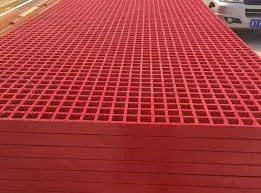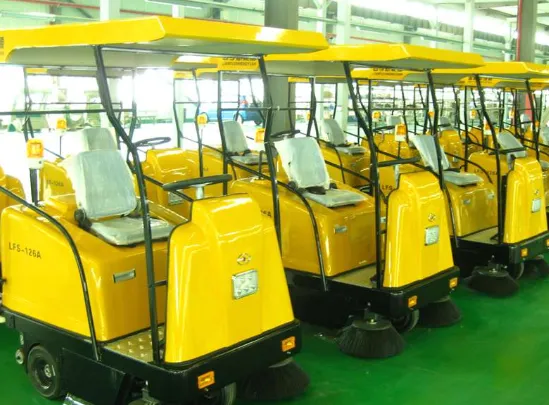
-
 Afrikaans
Afrikaans -
 Albanian
Albanian -
 Amharic
Amharic -
 Arabic
Arabic -
 Armenian
Armenian -
 Azerbaijani
Azerbaijani -
 Basque
Basque -
 Belarusian
Belarusian -
 Bengali
Bengali -
 Bosnian
Bosnian -
 Bulgarian
Bulgarian -
 Catalan
Catalan -
 Cebuano
Cebuano -
 China
China -
 China (Taiwan)
China (Taiwan) -
 Corsican
Corsican -
 Croatian
Croatian -
 Czech
Czech -
 Danish
Danish -
 Dutch
Dutch -
 English
English -
 Esperanto
Esperanto -
 Estonian
Estonian -
 Finnish
Finnish -
 French
French -
 Frisian
Frisian -
 Galician
Galician -
 Georgian
Georgian -
 German
German -
 Greek
Greek -
 Gujarati
Gujarati -
 Haitian Creole
Haitian Creole -
 hausa
hausa -
 hawaiian
hawaiian -
 Hebrew
Hebrew -
 Hindi
Hindi -
 Miao
Miao -
 Hungarian
Hungarian -
 Icelandic
Icelandic -
 igbo
igbo -
 Indonesian
Indonesian -
 irish
irish -
 Italian
Italian -
 Japanese
Japanese -
 Javanese
Javanese -
 Kannada
Kannada -
 kazakh
kazakh -
 Khmer
Khmer -
 Rwandese
Rwandese -
 Korean
Korean -
 Kurdish
Kurdish -
 Kyrgyz
Kyrgyz -
 Lao
Lao -
 Latin
Latin -
 Latvian
Latvian -
 Lithuanian
Lithuanian -
 Luxembourgish
Luxembourgish -
 Macedonian
Macedonian -
 Malgashi
Malgashi -
 Malay
Malay -
 Malayalam
Malayalam -
 Maltese
Maltese -
 Maori
Maori -
 Marathi
Marathi -
 Mongolian
Mongolian -
 Myanmar
Myanmar -
 Nepali
Nepali -
 Norwegian
Norwegian -
 Norwegian
Norwegian -
 Occitan
Occitan -
 Pashto
Pashto -
 Persian
Persian -
 Polish
Polish -
 Portuguese
Portuguese -
 Punjabi
Punjabi -
 Romanian
Romanian -
 Russian
Russian -
 Samoan
Samoan -
 Scottish Gaelic
Scottish Gaelic -
 Serbian
Serbian -
 Sesotho
Sesotho -
 Shona
Shona -
 Sindhi
Sindhi -
 Sinhala
Sinhala -
 Slovak
Slovak -
 Slovenian
Slovenian -
 Somali
Somali -
 Spanish
Spanish -
 Sundanese
Sundanese -
 Swahili
Swahili -
 Swedish
Swedish -
 Tagalog
Tagalog -
 Tajik
Tajik -
 Tamil
Tamil -
 Tatar
Tatar -
 Telugu
Telugu -
 Thai
Thai -
 Turkish
Turkish -
 Turkmen
Turkmen -
 Ukrainian
Ukrainian -
 Urdu
Urdu -
 Uighur
Uighur -
 Uzbek
Uzbek -
 Vietnamese
Vietnamese -
 Welsh
Welsh -
 Bantu
Bantu -
 Yiddish
Yiddish -
 Yoruba
Yoruba -
 Zulu
Zulu
Jan . 29, 2025 02:31
Back to list
frp flange
FRP (Fiberglass Reinforced Plastic) flanges are becoming increasingly vital in industries where corrosion resistance, lightweight efficiency, and durability are paramount. These industries include chemical processing, wastewater management, and offshore oil drilling, to name a few. Unlike traditional metal flanges, FRP flanges offer greater longevity in hostile environments, which is a significant factor contributing to their growing demand.
Trustworthiness is further established through rigorous testing under simulated environmental conditions, ensuring that FRP flanges meet industry-specific safety and performance benchmarks. Companies invest in Certifications like ISO 9001 to show dedication to quality assurance in manufacturing processes. Case studies from companies that have adopted FRP flanges also provide insights into long-term cost savings, a crucial factor for decision-makers. For example, some chemical factories report a reduction in replacement costs by up to 45%, thanks to the corrosion-resistant properties of FRP. The shift towards adopting FRP flanges as a preferred choice in demanding applications reflects not only a trend but a necessary evolution towards more sustainable engineering solutions. By integrating FRP flanges, industries not only enhance their operational capacity but also contribute to a more sustainable future due to reduced material wastage and energy consumption in production. This integration denotes a commitment to innovation and a forward-thinking approach, aligning with global sustainability goals. Anyone looking to optimize their infrastructure must consider FRP flanges as a viable solution. Not only does their application offer practical benefits, but it also aligns businesses with modern environmental standards. Consequently, this elevates the brand image, positioning companies as leaders in adopting cutting-edge, sustainable technologies. In conclusion, the adoption of FRP flanges is not merely about replacing one material with another; it's about embracing a future-oriented approach. With their proven benefits, technical robustness, and endorsement by leading industry bodies, FRP flanges stand out as a critical component for any business aiming to thrive in today's competitive and eco-conscious market.


Trustworthiness is further established through rigorous testing under simulated environmental conditions, ensuring that FRP flanges meet industry-specific safety and performance benchmarks. Companies invest in Certifications like ISO 9001 to show dedication to quality assurance in manufacturing processes. Case studies from companies that have adopted FRP flanges also provide insights into long-term cost savings, a crucial factor for decision-makers. For example, some chemical factories report a reduction in replacement costs by up to 45%, thanks to the corrosion-resistant properties of FRP. The shift towards adopting FRP flanges as a preferred choice in demanding applications reflects not only a trend but a necessary evolution towards more sustainable engineering solutions. By integrating FRP flanges, industries not only enhance their operational capacity but also contribute to a more sustainable future due to reduced material wastage and energy consumption in production. This integration denotes a commitment to innovation and a forward-thinking approach, aligning with global sustainability goals. Anyone looking to optimize their infrastructure must consider FRP flanges as a viable solution. Not only does their application offer practical benefits, but it also aligns businesses with modern environmental standards. Consequently, this elevates the brand image, positioning companies as leaders in adopting cutting-edge, sustainable technologies. In conclusion, the adoption of FRP flanges is not merely about replacing one material with another; it's about embracing a future-oriented approach. With their proven benefits, technical robustness, and endorsement by leading industry bodies, FRP flanges stand out as a critical component for any business aiming to thrive in today's competitive and eco-conscious market.
Next:
Related Products
Latest news
-
Exploring the Benefits of Top Hammer Drifter Rods for Enhanced Drilling PerformanceNewsJun.10,2025
-
High-Precision Fiberglass Winding Machine for GRP/FRP Pipe Production – Reliable & Efficient SolutionsNewsJun.10,2025
-
FRP Pipes & Fittings for Shipbuilding - Corrosion-Resistant & LightweightNewsJun.09,2025
-
Premium FRP Flooring Solutions Durable & Slip-ResistantNewsJun.09,2025
-
Premium Fiberglass Rectangular Tanks Durable & Lightweight SolutionNewsJun.09,2025
-
Tapered Drill String Design Guide Durable Performance & UsesNewsJun.09,2025









